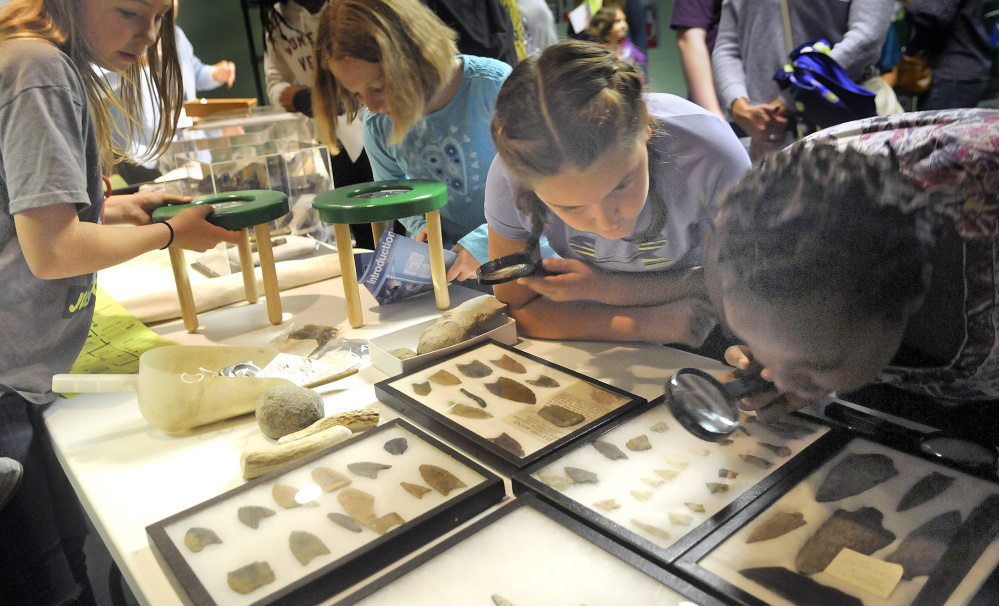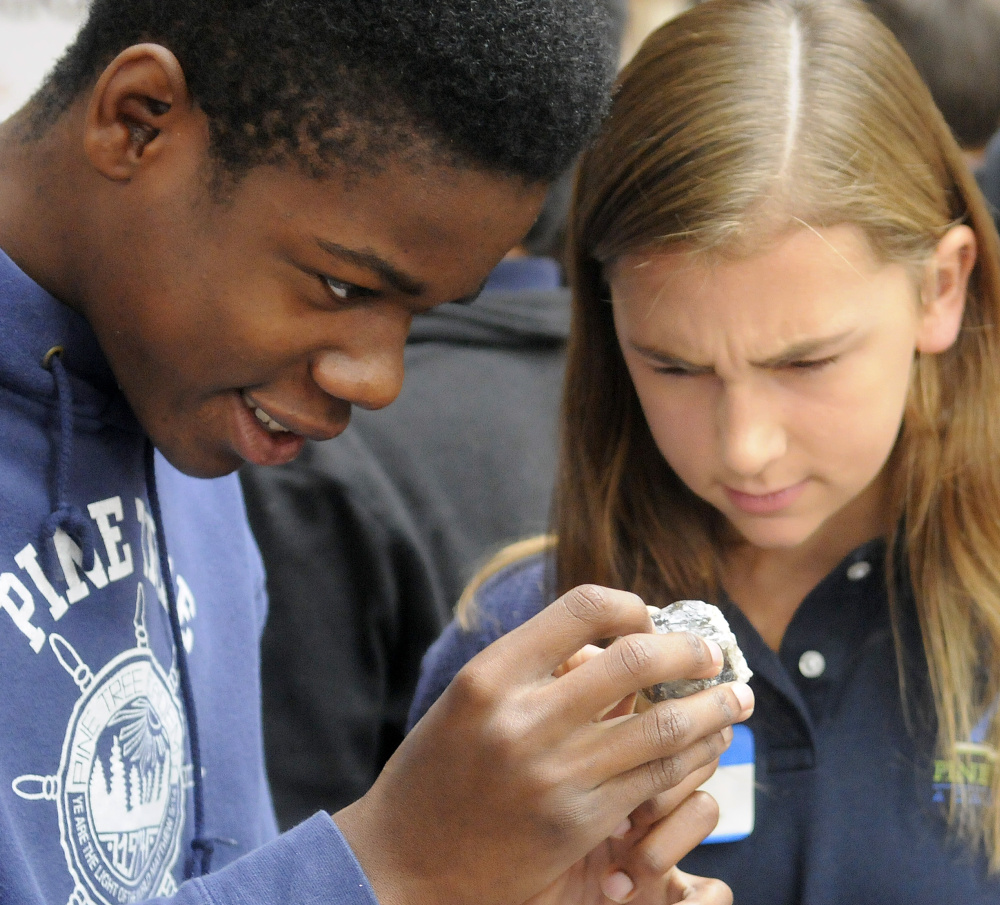AUGUSTA — Jake Emond and Dominic Kibbin-Tamburo both want to play in the National Football League. Maine State Museum chief educator Joanna Torow hopes that spending time at Maine Earth Science Day would inspire them to become scientists if their NFL dreams aren’t realized.
The two eighth-graders from Windsor Elementary School were among the nearly 2,000 students to visit the Maine State Museum on Tuesday in Augusta for the annual celebration of all the earth sciences.
Students, teachers, school officials and chaperons explored various interactive exhibits from scientists from the U.S. Geological Survey, the National Weather Service and the Department of Environmental Protection, among many others. Torow said the event is about trying to get children to start thinking about what they can contribute and “hopefully get them to think about” science as a career.
“We want them to go into these fields because we want these minds out there to solve the problems that are approaching,” Torow said. “This creates and is an inspiration. They see that it’s fun, which is really important.”
One of the most popular exhibits during the early morning was by the Maine Gold Prospectors, who had several interactive displays of how someone might find gold in Maine. Phillip Moulton, the group’s president, said gold in Maine was pushed down from Quebec by glaciers, and children are drawn to the metal, just like an adult.
“We have a lot of kids in our club, and they like digging holes and getting dirty,” said Moulton, whose club has 300 to 400 members. “They have a fun time.”
When the day began at 9 a.m., a group of students from Hall-Dale Elementary School in Hallowell spent several minutes playing with the sand in the Augmented Reality Sandbox. The U.S. Geological Survey exhibit was computer programmed to change the topography of the sandbox depending on how the children moved the sand.
Hall-Dale teacher Michelle Wheelock said about 45 students from the school were on the trip and they were excited to hear more about a lot of the things they learn in class.
“We have science targets that go along with a lot of these exhibits, so they were exploring hands-on what we learn in the classroom,” Wheelock said. “We are very fortunate to be able to attend, and the kids really get a lot out of it.”
As students followed the path on the floor to other parts of the museum, they passed exhibits on soil science, tree cookies and groundwater before they reached a man in a white coat and gray spiked hair with a lightning bolt going through it.
Meteorologist John Jensenius, known as Dr. Lightning, gave a presentation about lightning and lightning safety. He stressed the importance of knowing how dangerous lightning can be and he showed how to calculate how far away a lightning strike occurred.
Emond and Kibbin-Tamburo said they enjoyed the presentation and learned that lightning can travel through the ground and strike someone.
Events like these are good, Emond said, because while teachers try to cover every subject, there is a limited amount that can be taught in school.
Ryan Madore, who was with his daughter Hayden, a fifth-grader at Hall-Dale Elementary, said he was learning as much as the children.
“It’s good for the kids to think critically about what they can do to help the environment, because there’s probably a lot of things we haven’t thought of,” Madore said. “It’s going to be their turn to create and invent new things.” His daughter said she enjoyed seeing all of the exhibit and learning new things about science.
Torow said Maine Earth Science Day and Bug Maine-ia, which was held last month, are the two biggest events during the school year. The educator said she couldn’t overstate the importance of these types of activities to young children, who are going to be the ones making critical decisions that can shape the future of the planet.
“It’s about getting them to celebrate the Earth, and especially what we have in Maine,” Torow said. “We want them to take a closer look at our environment.”
Jason Pafundi — 621-5663
Twitter: @jasonpafundiKJ
Send questions/comments to the editors.







Comments are no longer available on this story